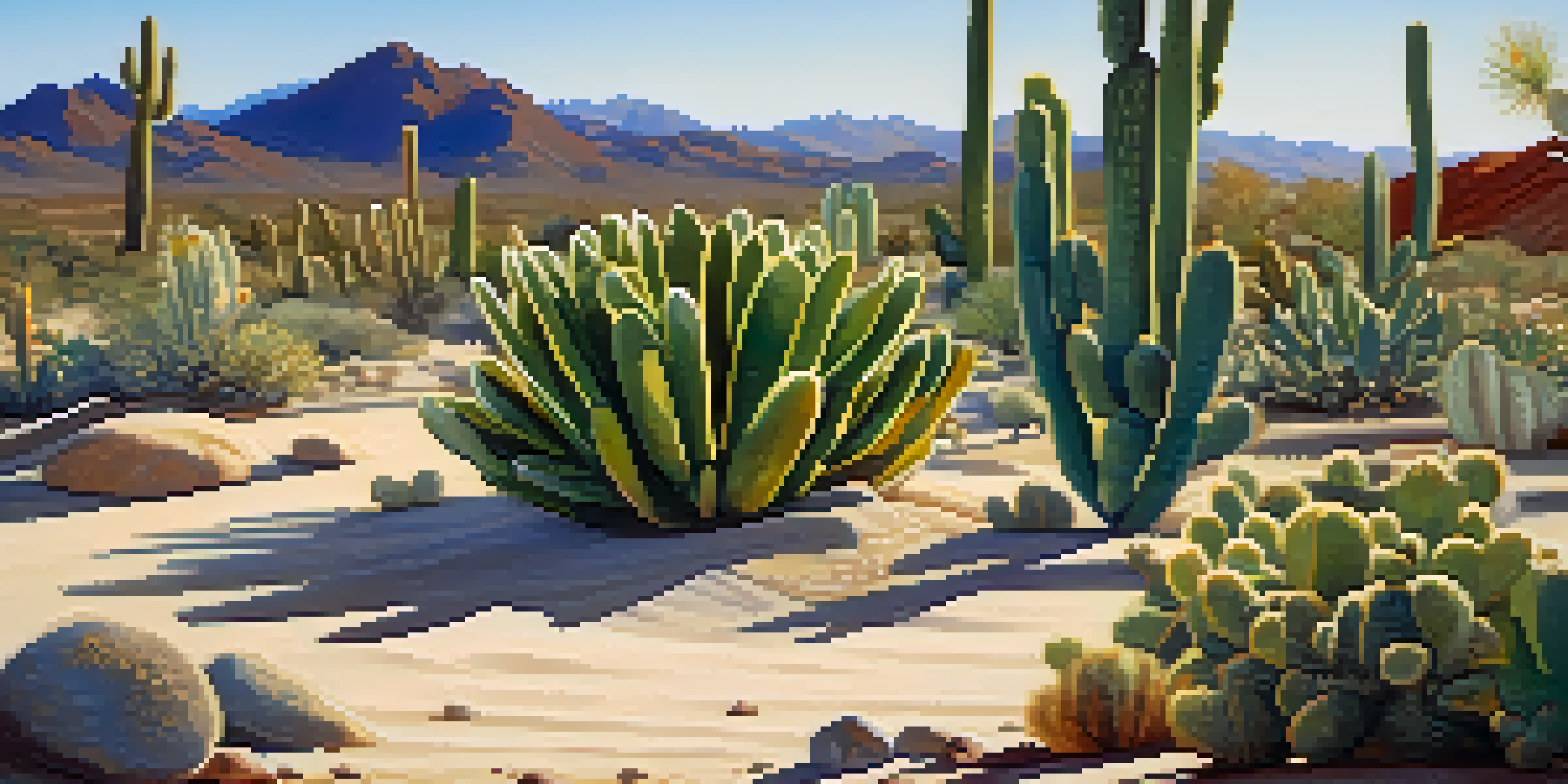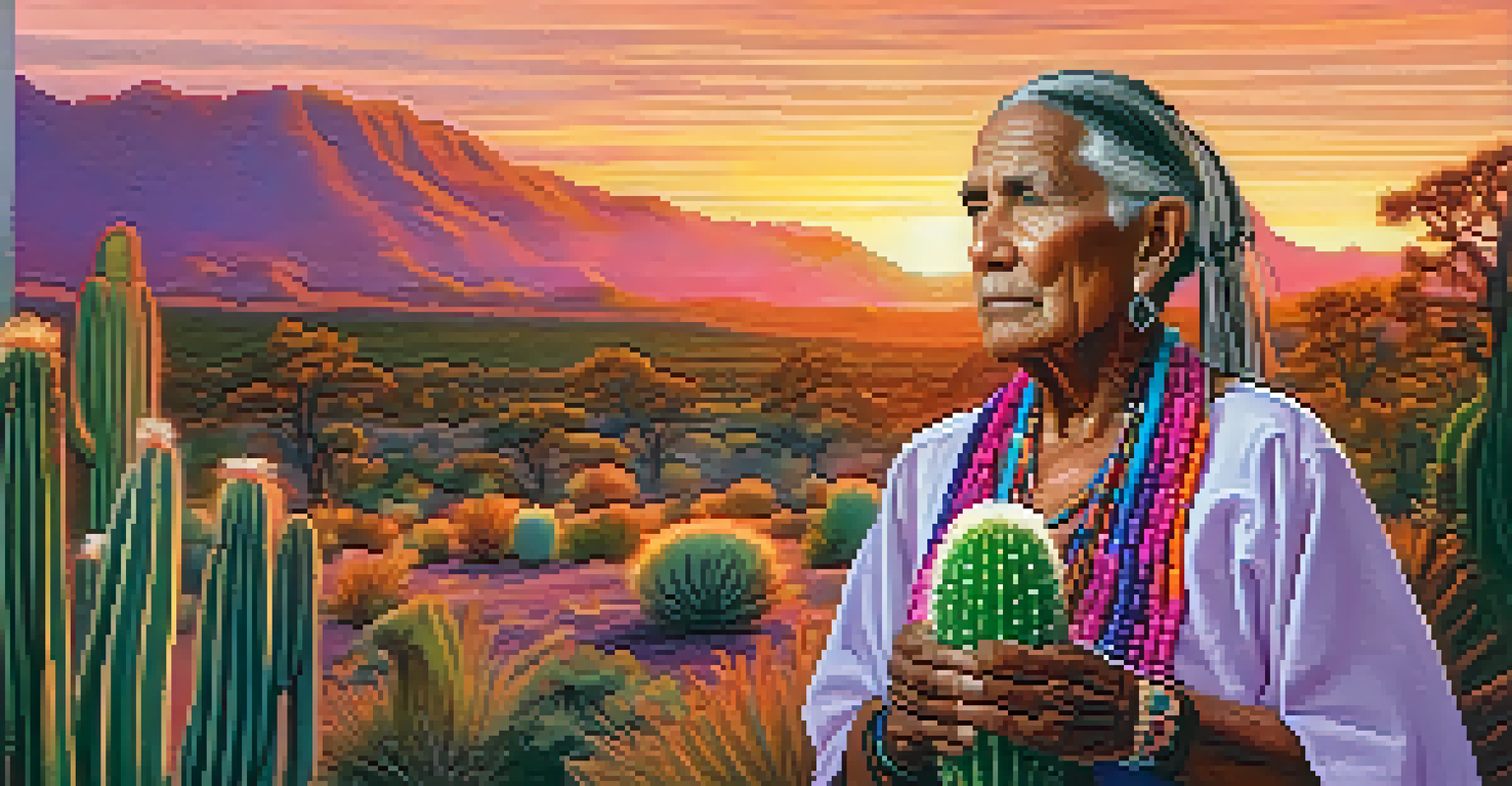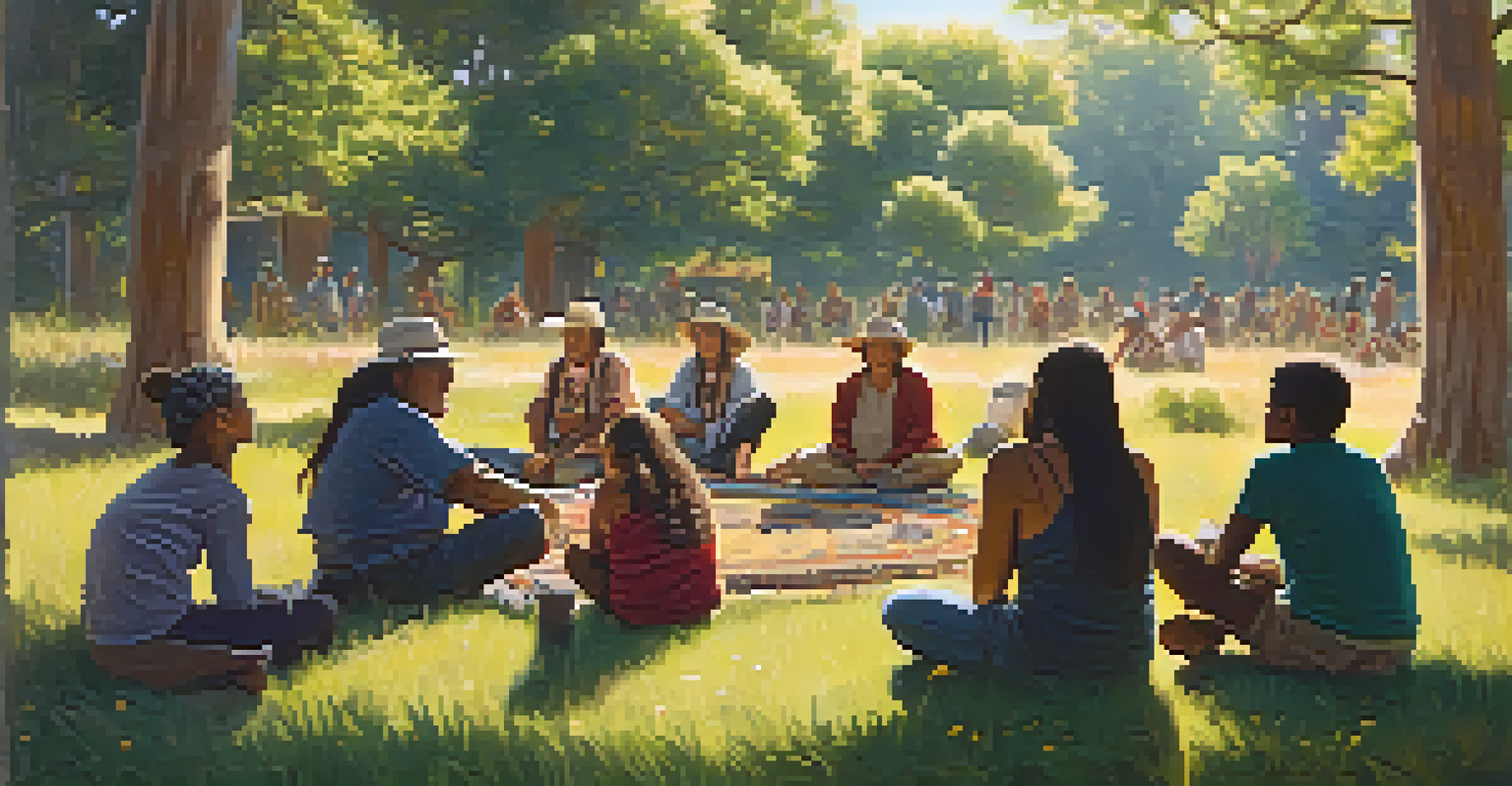The Importance of Community-Led Conservation for Peyote Cacti

Understanding Peyote Cacti and Their Significance
Peyote cacti, a small spineless cactus native to Mexico and the southwestern United States, holds immense cultural and spiritual significance for various Indigenous peoples. For centuries, these communities have used the cactus in religious ceremonies and healing practices. Beyond its cultural value, Peyote also plays a crucial ecological role, providing habitat and sustenance for local wildlife.
The land is sacred. It is the birthplace of our ancestors, and it is our responsibility to care for it.
Unfortunately, the popularity of Peyote has led to overharvesting and habitat loss, threatening its survival in the wild. This situation highlights the urgent need for conservation efforts that respect the traditions and rights of Indigenous communities. By understanding the intrinsic value of Peyote, we can better appreciate the importance of protecting this unique plant.
Moreover, the conservation of Peyote cacti is not just about saving a plant; it's about preserving a way of life for many Indigenous cultures. Their historical connection to the land and its resources emphasizes the need for a conservation approach that prioritizes their insights and practices.
The Role of Community-Led Initiatives in Conservation
Community-led conservation refers to local efforts to protect and manage natural resources based on the needs and knowledge of the community. These initiatives empower Indigenous groups to take ownership of their heritage and actively participate in conservation. When communities lead the way, conservation strategies are more likely to be effective and sustainable.

By incorporating traditional ecological knowledge, these initiatives often develop more holistic approaches to conservation. For instance, local communities may have insights into sustainable harvesting practices that can help ensure the survival of Peyote. This kind of knowledge, passed down through generations, is invaluable in creating effective conservation strategies tailored to specific ecosystems.
Cultural Importance of Peyote
Peyote cacti hold significant cultural and spiritual value for Indigenous peoples, necessitating their protection.
Additionally, community-led conservation fosters a sense of pride and responsibility among local members. When people feel connected to their land and its resources, they are more motivated to protect them, ensuring the future of Peyote and other vital species.
Challenges Facing Peyote Conservation Efforts
Despite the potential of community-led conservation, several challenges hinder these efforts. One major issue is the ongoing pressure from illegal harvesting and the unregulated trade of Peyote cacti. As demand increases, the incentive for overharvesting grows, often at the expense of sustainability.
When we preserve our traditions, we preserve our identity and our connection to the earth.
Another challenge is the lack of legal recognition for Indigenous land rights, which can complicate conservation efforts. Without clear ownership and authority, communities may struggle to implement effective conservation measures. This legal ambiguity can lead to conflicts and undermine local initiatives aimed at protecting Peyote.
Moreover, external influences such as climate change pose additional threats to the ecosystems where Peyote grows. Changes in temperature and precipitation patterns can disrupt the delicate balance of these habitats, making it even more critical for communities to adapt and innovate in their conservation strategies.
Successful Examples of Community-Led Conservation
There are numerous instances where community-led conservation efforts have successfully protected Peyote and its habitats. One notable example is the work of the Native American Church, which emphasizes sustainable practices and spiritual stewardship of Peyote. Their initiatives not only aim to preserve the cactus but also educate the broader community about its significance.
Additionally, some tribes have developed programs that involve restoring natural habitats and promoting sustainable harvesting practices. These efforts often include educating younger generations about the importance of Peyote and its conservation. By involving youth, communities ensure that traditional knowledge and practices are preserved for future generations.
Community-Led Conservation Success
Empowering Indigenous communities in conservation efforts leads to more effective and sustainable strategies for preserving Peyote.
These successful models serve as powerful reminders of what can be achieved when local communities are empowered to take charge of their resources. When supported properly, these initiatives can lead to long-lasting positive impacts on both the environment and the community.
The Importance of Collaboration in Conservation Efforts
Collaboration among various stakeholders is crucial in enhancing community-led conservation efforts. Local communities, government agencies, and non-profit organizations can work together to create comprehensive strategies that address the challenges facing Peyote cacti. This collective approach often leads to more resources, knowledge sharing, and support for local initiatives.
For example, partnerships can provide training on sustainable practices and help secure funding for conservation projects. By pooling resources, stakeholders can tackle issues like illegal harvesting and habitat degradation more effectively. Collaboration also enables the integration of scientific research with traditional ecological knowledge, leading to more robust conservation strategies.
Ultimately, building trust and fostering open communication among all parties involved is essential for effective collaboration. When everyone works together towards a common goal, the prospects for successful conservation of Peyote and its ecosystems improve significantly.
Empowering Indigenous Voices in Conservation
Empowering Indigenous voices is a fundamental aspect of successful community-led conservation. Recognizing and respecting the rights and knowledge of Indigenous peoples is crucial to creating effective conservation strategies. Their perspectives can offer valuable insights into the ecological health of their lands and the cultural significance of species like Peyote.
Promoting Indigenous leadership in conservation initiatives not only enhances the effectiveness of these efforts but also acknowledges the historical injustices faced by these communities. By prioritizing their input, conservation efforts can become more inclusive and equitable. This shift in perspective also helps to foster respect and understanding between Indigenous groups and external stakeholders.
Collaboration is Key to Success
Effective conservation of Peyote requires collaboration between local communities, government, and non-profits to address challenges.
Furthermore, empowering Indigenous voices can lead to more meaningful outcomes for biodiversity and cultural preservation. When communities have a say in the management of their resources, they are more likely to advocate for sustainable practices that benefit both the environment and their cultural heritage.
The Future of Peyote Conservation and Community Involvement
Looking ahead, the future of Peyote conservation hinges on the ongoing involvement of local communities. As challenges continue to arise, adaptive and innovative strategies will be essential for safeguarding this important cactus. Empowering communities to lead these efforts can help ensure that both the plant and its cultural significance are preserved.
Moreover, increasing awareness and education about Peyote can foster greater public support for conservation initiatives. By sharing stories and experiences from Indigenous communities, a wider audience can appreciate the importance of these efforts. This collective understanding can drive action and support for policies that protect Peyote and its habitats.

Ultimately, the success of community-led conservation for Peyote cacti depends on collaboration, respect, and shared knowledge. By valuing and uplifting Indigenous voices, we can create a future where Peyote thrives, and its cultural heritage is honored and preserved.